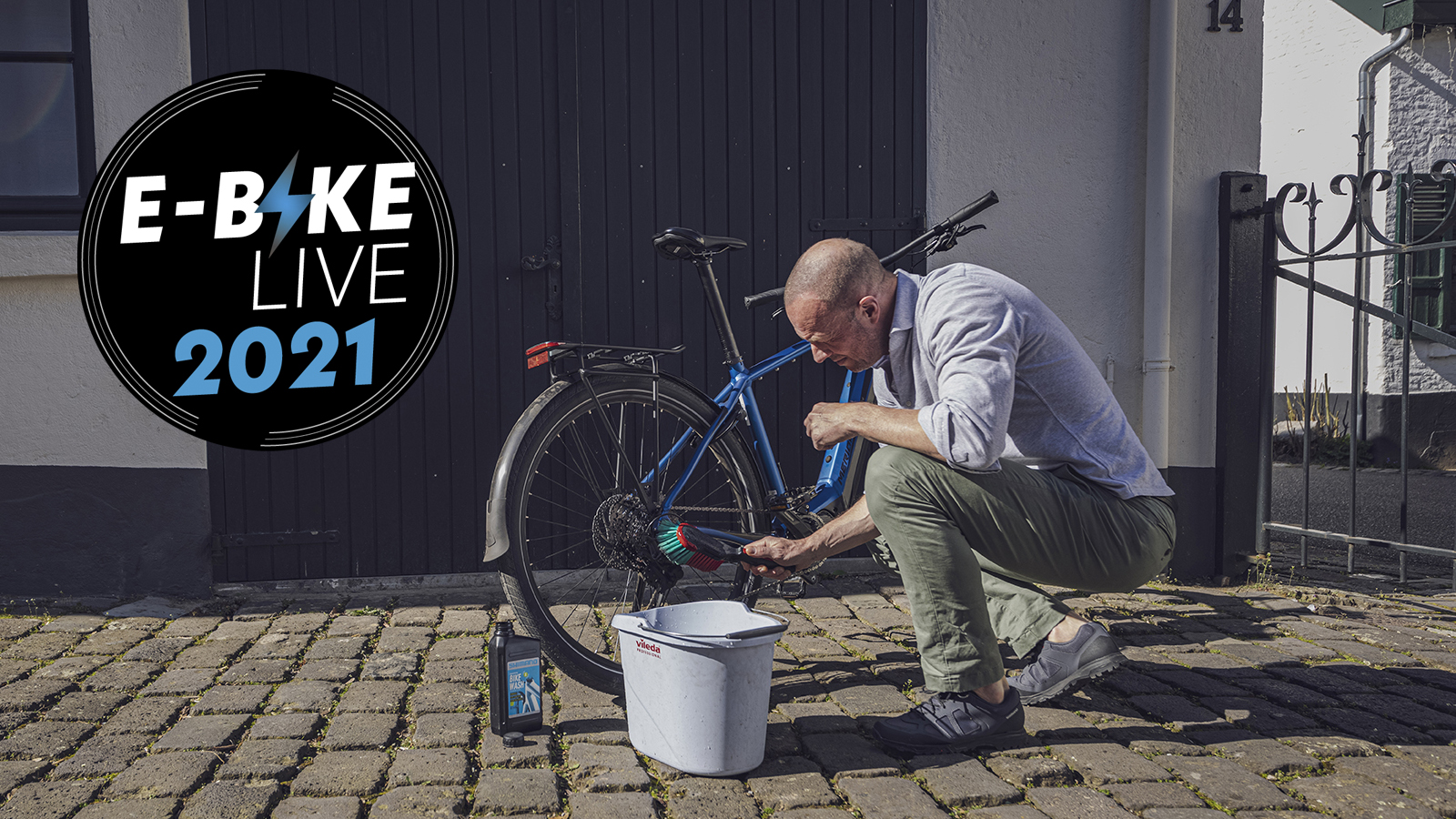Electric bike maintenance: The ultimate guide to keeping your e-bike running smoothly
Everything you need to know about electric bike maintenance to keep your pride and joy in tip-top shape

When it comes to electric bike maintenance, there can be a lot of working parts that require upkeep. Knowing what needs doing and when to do it can be a little overwhelming at first, but rest assured the basics of electric bike maintenance aren't difficult at all.
A lot of the maintenance that an electric bike needs is the same as any regular bicycle. It can feel overwhelming because of the extra components but if you look after things, it's unlikely you will experience any serious issues.
The electric-specific parts of an e-bike are almost completely off-limits to the home mechanic. There's a real danger of serious injury plus you risk voiding your warranty if you take things apart yourself.
Fortunately, the battery and motor are long-lasting components and require very little in the way of outright maintenance. Unlike the traditional parts of a bike, which are consumable items that wear out, the electronics should keep on working owing to the protective and waterproof housings. If there is an issue, check with the manufacturer to find out how to best proceed.
- Best e-bike motors: Everything you need to know
- Best electric gravel bikes: our pick of the best bikes for assisted off-road adventures
- Best electric bikes for commuting: Power up your ride to work
Clean your bike after every ride
Some of the best maintenance advice involves keeping your bike clean. The big wear items are the chain, the brakes, and the tyres but then most riders - even experienced cyclists - don't really know what to look for when it comes to component wear. Another way to slow down wear and tear is by avoiding riding in wet conditions where crud and other contaminants can get into the drivetrain. That said, you might live in wet climate which brings us onto our next point.
Anytime your bike is wet or dirty do your best to give a clean or even a hose down before storing it. Without ever hitting delicate components with high-pressure water, rinse off any caked-on dirt. Give the frame a gentle wipe and make sure the chain is clean and dry. During the cleaning process make sure you are paying attention to any irregulars or red flags.
Regular deep cleans and inspections
It's recommended that you spend some time giving your bike a deep clean every few weeks. Look for dirt stuck in the derailleur and in all the nooks and crannies around the wheels. Clean the chain and re-lube it. The frame should end up genuinely sparkly.
Get The Leadout Newsletter
The latest race content, interviews, features, reviews and expert buying guides, direct to your inbox!
During this more thorough cleaning process, check the tyres. Look for cuts, even if the tyres are holding air. If your tyres have substantial lugs, check to see that they aren't worn down and if you have road tyres make sure there isn't a flat spot in the middle of the otherwise round carcass. Don't be shy about replacing tyres. Good condition tyres are much less likely to experience a puncture.
- Best road bike tyres
- Best gravel tyres
- How to fit a bike wheel
- How to change a bike tyre
- How to repair an inner tube on your bike
If you ride your bike less than average due to inclement weather, then you can stretch out the cleaning intervals. The fact remains that a clean bike will perform better than one that's been neglected so don't stretch the cleaning intervals too far. It's a ritual after all and something that really let's get intimate with how everything works and bolts together.
Pay attention while you ride
You need to pay attention to the way your bike is performing while riding it, especially when it comes to electric bikes as there is more force placed on the components. When riding you want to be listening for any strange sound effects. One of the first, obvious signs that things aren't right is extra noise from a bike. Is there something that's rattling? Is the chain making noise? What about the brakes - are they squealing?
A well-maintained bike will be pretty quiet. There'll still be some noise coming from the chain and, with electric bikes, you may hear the motor but that's normal. Everything should be running smoothly. Listen out for clunky gear changes or skipping/slipping gears. If at any point your bike gets louder, or there is any kind of grinding noise, that's when you need to take a closer look.
One thing to look for is ensuring your thru-axles are tightly fastened. If you notice your wheel develops a slight wobble it will probably also make noise as your rotors rub against your brake pads. If the wobble persists, have the wheel checked as it's likely that it has become buckled from a pothole.
- Best folding electric bikes: Pedal-assisted folding e-bikes to simplify your commute
- Best women’s electric bikes: E-bikes for road, gravel, commuting and more
- Best electric road bikes: Ride faster and further for less effort
- Best electric bike conversion kits: give your current bike a power boost
Do periodic maintenance
No matter how clean and well lubed you keep your bike there is still a need for periodic maintenance. Cables stretch, brake pads wear - as do chains and tyres.
As far as the rest of the bike goes, Rad Power Bikes has some recommendations. Rad Power Bikes is the leading manufacturer of e-bikes in the United States, and suggest a basic tune-up every six months or 750-1,250 miles.
A basic tune-up should include adjusting and inspecting all the major systems. Gear cables should get an adjustment and may need replacement. Brake pads and rotors should be thoroughly checked and the system bled if deemed necessary by the mechanic. Have the chain checked for wear and possibly replaced. Check that the cassette is in good working order, too. Look for movement or noise in the bottom bracket and service as necessary.
Don’t put things off
Parts are expensive and being without a bike is no fun at all. Wash your bike regularly and use that time to get familiar with the way it operates - this will help you pinpoint any areas of concern when things do eventually go awry. Grit on the brake pads or the chain will wear them out significantly faster. Worn brake pads will wear the rotors down faster and result in an expensive bill.
Small and easy-to-fix problems can become expensive if left unattended. This is even more true on an electric bike where the forces involved are higher. Brakes pads are inexpensive but rotors aren't. A chain is an inexpensive part but a worn chain will wear down the entire drivetrain (chainrings and cassette), which is another costly exercise. Pro tip: don't wait for a small problem to become a big one.
Josh hails from the Pacific Northwest of the United States but would prefer riding through the desert than the rain. He will happily talk for hours about the minutiae of cycling tech but also has an understanding that most people just want things to work. He is a road cyclist at heart and doesn't care much if those roads are paved, dirt, or digital. Although he rarely races, if you ask him to ride from sunrise to sunset the answer will be yes. Height: 5'9" Weight: 140 lb. Rides: Salsa Warbird, Cannondale CAAD9, Enve Melee, Look 795 Blade RS, Priority Continuum Onyx

